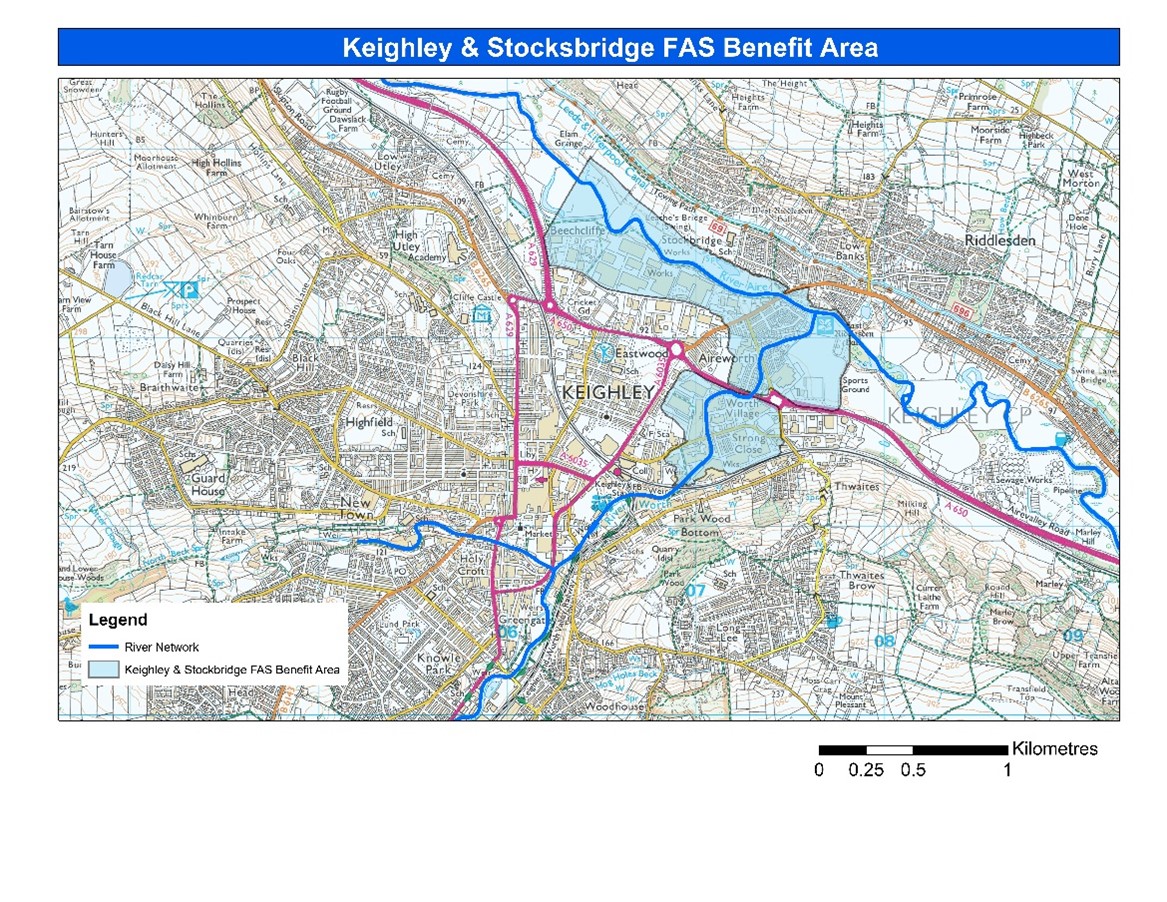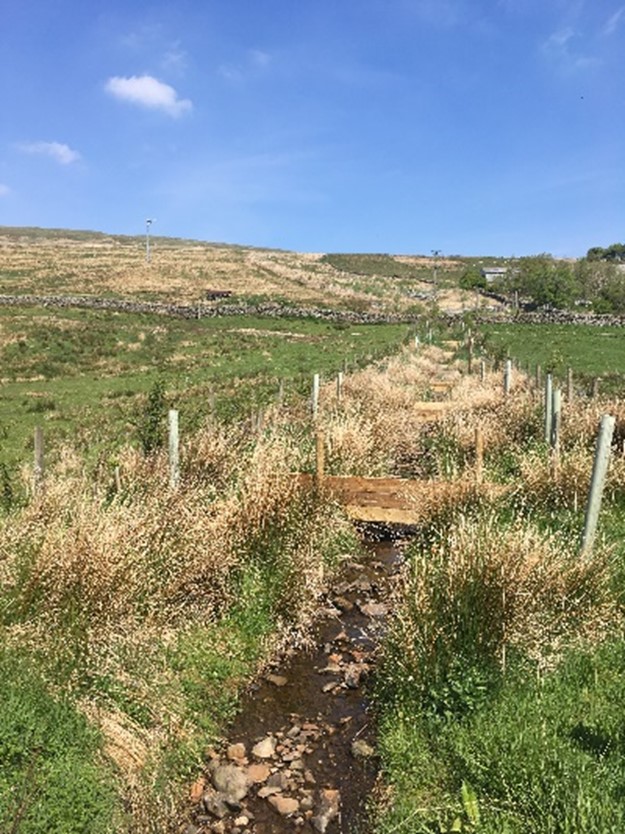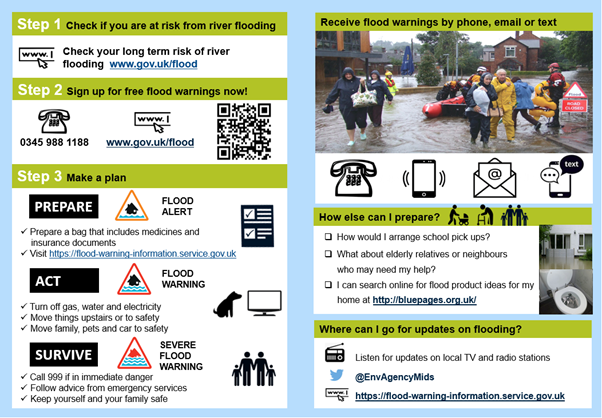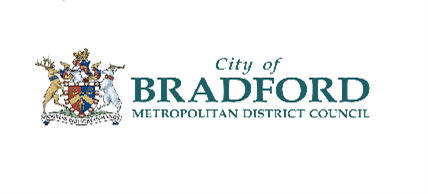Keighley & Stockbridge FAS
Overview
Reducing Flood Risk, Helping Keighley to Thrive
We can't prevent flooding from rivers and streams entirely, but we can reduce the risk of flooding. By working with our partners and people who are at risk, we can minimise its effects and reduce the damage it causes.
Welcome to the Keighley and Stockbridge Flood Alleviation Scheme Information Page.
We have created this page to share information and updates on the planned flood alleviation scheme for Keighley and Stockbridge. We will continue to add information to this webpage as the scheme progresses.
We also post information on our Twitter page (@EnvAgencyYNE).
We will issue regular newsletters. To be added to the mailing list, or to request our newsletter in an accessible format, please email us at kasfas@environment-agency.gov.uk Our latest newsletter can be viewed here.
Background
Keighley is an industrial town in West Yorkshire, approximately 10 miles from Bradford. It is the second largest settlement within the borough with a population of over 50,000 people.
Keighley is situated at the confluence of the River Aire and River Worth and has a long history of flooding. Approximately 460 residential properties and 290 businesses in the area are currently at risk of flooding.
The River Worth Flood Alleviation Scheme was constructed in the early 1980s and comprises raised defences and embankments along the River Worth. These sit alongside some privately owned walls and buildings that act as flood defences. There are also raised defences on the River Aire in Keighley, which were last refurbished in 2004.
Whilst these defences have provided protection from flooding over many years, some of these defences – particularly those on the River Worth - are now nearing the end of their design life and need repairing or replacing.
There is also a risk of flooding from surface water in Keighley. This risk increases when river levels are high and the surface water is unable to drain away through the drainage network as it usually would.
Flood History
Records of large-scale flood events in Keighley and Stockbridge go back to 1866.
In recent years, the area was badly affected by flooding in 2000, 2004 and 2015.
Widespread and substantial rain fell throughout West Yorkshire during November and December 2015. Many rivers recorded their highest ever flows in December 2015. On the 25 – 26 December 2015, heavy rainfall associated with Storm Eva saw the River Aire/Worth reach its highest ever recorded level in Keighley and overtop the existing flood defences.

Aerial footage of Keighley following the 2015 Boxing Day floods
Scheme Overview
The Environment Agency is working in partnership with the City of Bradford Metropolitan District Council and Yorkshire Water to deliver a flood risk management scheme that will reduce flood risk to residents and businesses within the Keighley and Stockbridge area.
The scheme aims to reduce the risk of flooding from the River Worth and the River Aire by refurbishing and/or replacing the existing defences along the rivers.
We aim to reduce risk from surface water flooding, and will explore options in the upper catchment, such as natural flood management, to slow the flow and help manage the impacts of climate change.

Map showing the Keighley and Stockbridge FAS benefit area
Scheme Development Process
When developing a flood risk management project that is seeking to apply for Flood and Coastal Erosion Risk Management (FCERM) Grant-in-Aid funding, Risk Management Authorities including the Environment Agency must follow the steps outlined in the Government’s guidance on developing an FCERM project business case.
The first key step in the business case process is the development of a Strategic Outline Case. This was completed and approved for the Keighley and Stockbridge FAS in early 2022. This involved strategically assessing a range of options to address flood risk in Keighley and Stockbridge, to demonstrate that further investment to explore these options is justified.
The next step is to develop an Outline Business Case. This is the current stage of the scheme. This involves detailed assessment of the options to identify the preferred option, hydraulic modelling to understand the benefits of these options, cost benefit analyses and outline design.
The final stage will be to complete a Full Business Case. This involves designing the preferred option in detail and finalising costs, benefits, planning / permit requirements and funding. Construction can then begin.
Timescales
We have completed our initial investigations and strategically assessed options for the scheme in a Strategic Outline Case.
We are now completing more detailed assessments of the options and progressing the Outline Business Case development. We expect to submit the Outline Business Case for approval at the end of 2024.
We are scheduled to start construction around 2026/27 and complete the scheme by late 2030.
Get Involved
It is important to us that residents, businesses, landowners and other interested parties have the opportunity to give us their views on the scheme. We will be engaging with the local community throughout the development of the scheme, to ensure that we listen to and learn from others’ views.
Engagement will increase as we begin to shape a shortlist of options and move towards a final design for the scheme. We will share details of the options we are assessing on this webpage. Future engagement events will also be advertised here and promoted via our Twitter (@EnvAgencyYNE) and Facebook pages.
We encourage all interested parties to sign up to receive our updates by registering your interest at kasfas@environment-agency.gov.uk. We also encourage you to support any family members, friends or neighbours who cannot access online information, by sharing our updates with them.
We will continue to keep you informed. If you have any questions or concerns in the meantime, you can contact us at kasfas@environment-agency.gov.uk.
Natural Flood Management
As part of the Keighley and Stockbridge flood alleviation scheme, we are exploring the use of natural flood management (NFM) in the River Worth upper catchment to ‘slow the flow’ and reduce river levels in Keighley during times of flood.
NFM works by protecting and restoring natural processes in catchments and rivers, and can take many forms including targeted tree planting, moorland restoration, land management (including soil aeration) and wetlands or water storage features.

Photo showing an example of natural flood management in Oughtershaw, near Hawes.
To support this work, we would like to hear from any landowners in the River Worth catchment that are interested in exploring NFM opportunities on their land.

Map showing River Worth catchment area where NFM is being considered
To register your interest in discussing NFM opportunities for landowners in the River Worth catchment, please contact us on KASFAS@environment-agency.gov.uk.
Be Prepared
Remember that homes and businesses which receive protection are still at risk of flooding.


Flooding can happen very quickly, and the effects can be devastating. Being aware of your own flood risk is the first step to being prepared. Find out if your property or business is at immediate or long-term risk of flooding here.
If your home or business is at risk of flooding, we encourage you to sign up to receive flood warnings. You’ll be alerted by phone, email or text message when flooding is expected. This service is free. Just click here to sign up or contact Floodline on 0345 988 1188 (call charges may apply).
More information on how to prepare for flooding, including guidance on making a flood plan and protecting your property is available here.
Audiences
- Recreational and commercial river users
- Fishing clubs and representative associations
- Members of the public with an interest in the river, the species and conservation
- Businesses
- Members of the public
- Elected representatives, including MPs
- Local councils
- Environment Agency customers
- Land owners
- Drainage associations
- Elected representatives, including MPs
- Members of the public
- Community groups
Interests
- Flood management
- Specific projects, issues, or activity pages






Share
Share on Twitter Share on Facebook